The Berkshires Bowling Alley that Inspired "The Big Lebowski"
It’s been 36 years since the release of The Big Lebowski, the irreverent cult comedy by Joel and Ethan


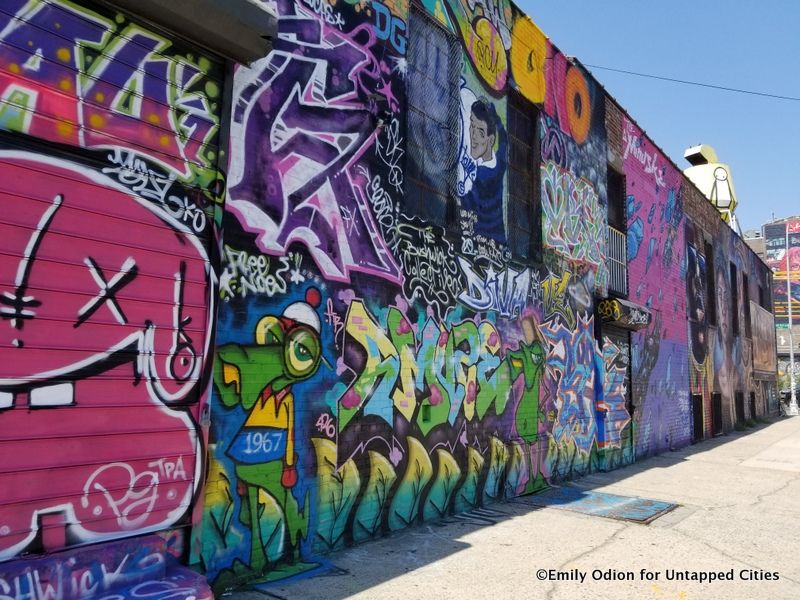
Like most neighborhoods in New York City, Bushwick enjoys a past marked by tumultuous economic and aesthetic adaptions since its establishment as a township in 1638. It is difficult to imagine, but the former town of Boswyck, spanning across what is now Williamsburg, Greenpoint, and Bushwick, was once once a partially wooded grazing area for the city’s livestock and was home to mainly Dutch immigrants. It wasn’t until 1855 that the neighborhood was integrated into the city of Brooklyn, and new factories flooded the area, establishing industrial complexes and contributing to a more localized economy.
One of the main historical industries of the area was beer production, and the neighborhood became known as the beer capital of the Northeast. Bushwick saw the height of its wealth during the world wars as a result of the brewing industry, which lead to the construction of the characteristic above-ground rail system as well as a number of historic mansions along Bushwick Avenue, many of which can still be seen today.
Throughout the 1960s, the neighborhood faced a downturn as energy costs rose and many factories left the area. During the 1970s, around half the neighborhood was on welfare, and the neighborhood suffered a blackout during 1977 which prompted a series of lootings and robberies.
Walking around Bushwick, one can witness the marks of its distant and recent past in addition to those of its future, including renovated apartments for young, upwardly mobile types looking to outrun the Manhattan rent for an artistic and post-industrial alternative. The transformation of the neighborhood was spurred in particular by the Bushwick Initiative, a policy under the New York City Department of Housing Preservation and Development to decrease crime and poverty in the neighborhood beginning with the rise of the 2000s.
The series of ups and downs that the neighborhood has faced have left an inevitable mark on the makeup of the neighborhood today, which sprawls adjacent to Williamsburg to the southeast, between the Queens neighborhood of Ridgewood and Bedford-Stuyvesant to the West.
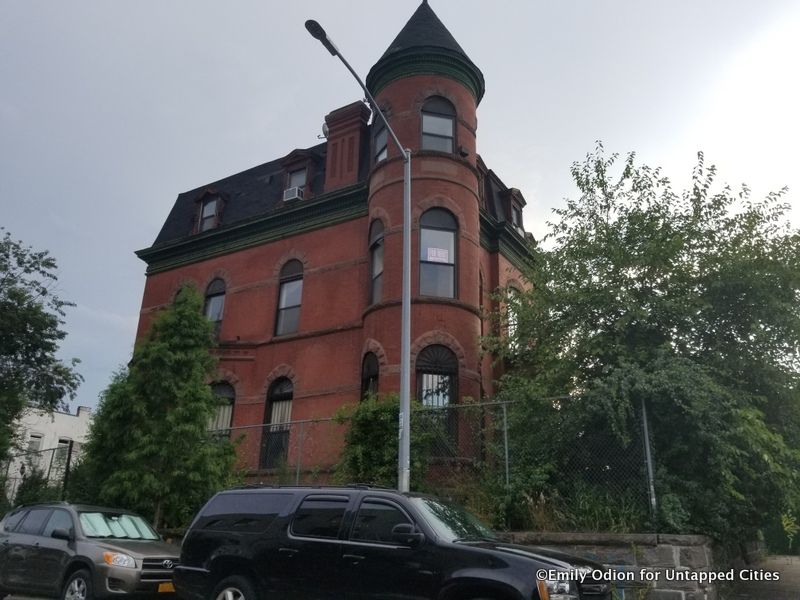
Bushwick’s wealthy past at the end of the 19th century gave rise to a number of large, beautiful mansions constructed mainly along Bushwick Avenue. The Lipsius-Cook mansion was one of these, built for Catherina Lipsius, the owner of one of the many lucrative breweries in Bushwick at the time. In 1902 it was sold to Dr. Fredrick Cook, who claimed to be the first American to summit Mt. McKinley in Alaska and reach the North Pole.
The brick building is hard to miss, due to its close proximity to the JMZ above ground subway line that runs right next to it, which offers a glimpse into the tower on the second floor, and its rather spooky manner. The building has been abandoned for some time, after serving as a Catholic convent for a time during the 20th century. In 2013, the building was officially declared a landmark by the NYC Landmark Preservation Commission. Although there isn’t much to see there other than the edifice, there are a number of mansions along the adjacent Bushwick Avenue from the same era that can be seen as well.
The Lipsius-Cook Mansion is located at 670 Bushwick Avenue.
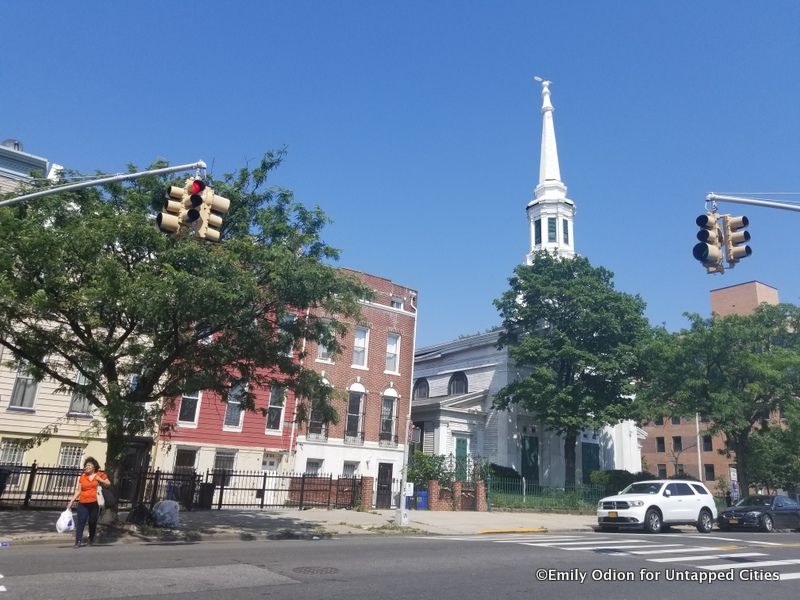
Farther along down Bushwick Avenue is the Reformed Protestant Dutch Church Complex, with distinctive white spires. Listed on the National Register of Historical Places in 1982, the Church has a history in the area that dates back to before the building itself, which was completed in 1853. It was constructed to be the center for the Bushwick Reformed Church, which dates back to 1654. The building itself is not grandiose, but hard to miss.
The Dutch Church is located at 855 Bushwick Avenue.
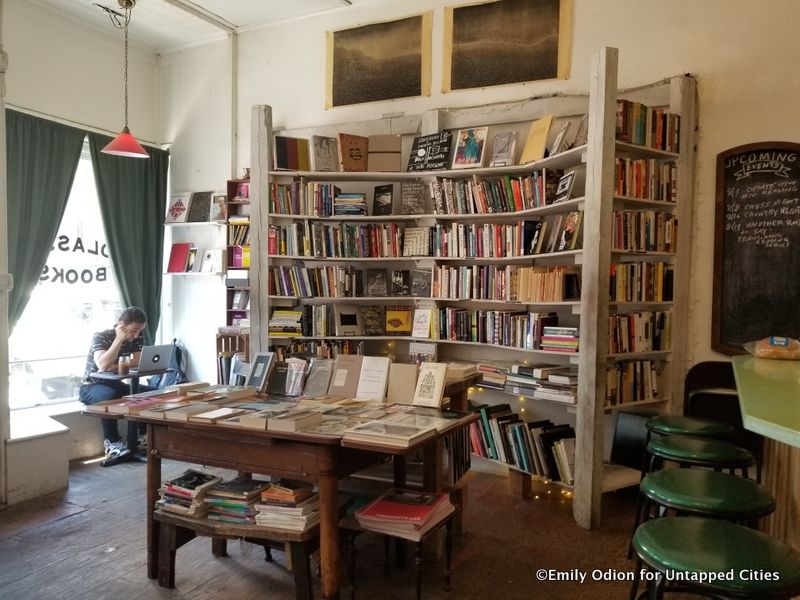
Molasses Books became the first bookstore in Bushwick when it opened in 2012. It functions like a hidden, quiet zone in the neighborhood, tucked into a side street a block away from Maria Hernandez Park. Its the perfect place to go for a quiet afternoon reading, or to browse their selection of used books, which average between 8-10 dollars.
The store is small and cozy, with a coffee, beer and wine bar in the back which includes the opportunity to barter books for drinks. They accept book donations and sometimes can offer cash for used books. They also have some events and readings, which can be seen on their Facebook page.
Molasses Books is located at 770 Hart Street.
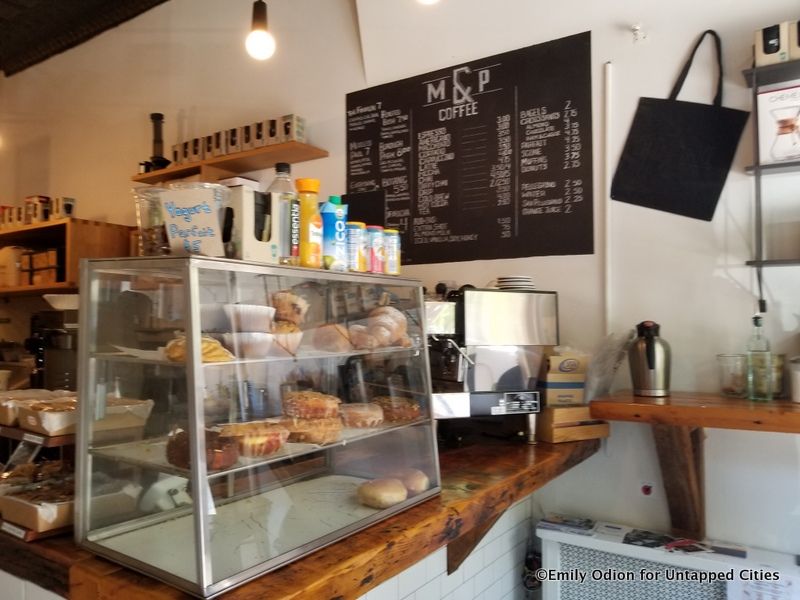
This wouldn’t be a proper neighborhood list without at least one traditional hipster-esque coffee shop making the list, and that spot goes to Milk & Pull on the charming Irving Street. They serve some New York favorites, including Stumptown coffee and Dough doughnuts. They have another location in Ridgewood, as well as a new location in Bed-Stuy. It’s another great place in the neighborhood for some quiet time, or to be productive, and it’s jus a few blocks over from Maria Hernandez park and the Dekalb metro stop on the L train.
Milk & Pull is located at 181 Irving Street.
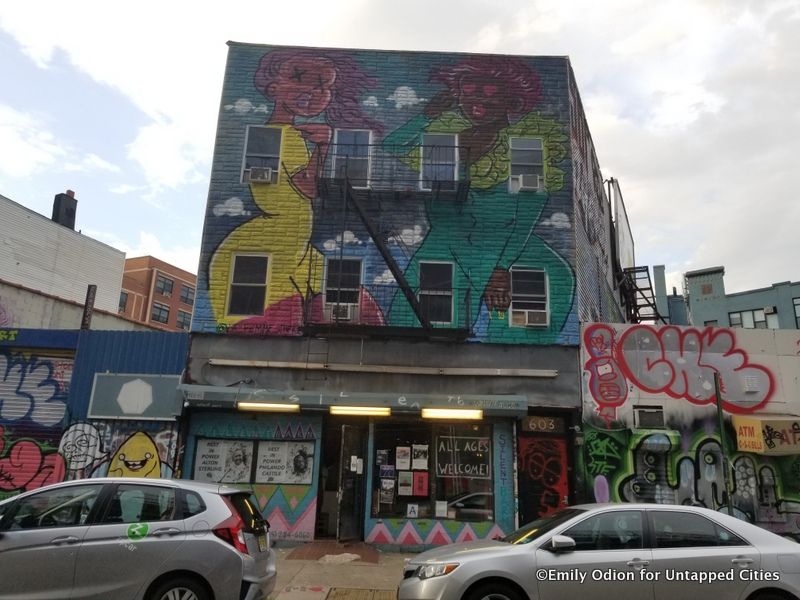
The latest location of the Silent Barn, formerly a DIY venue on the border of Ridgewood and Bushwick, is a community center for people of all ages to interact with art. The new space at 603 Bushwick Avenue, which was acquired through crowdfunding following city closure and vandalism of their original location in 2011, is very easy to miss along the bustling Bushwick Avenue, but once inside the area is spacious and friendly.
There is a stage, a communal table, and a bar at the far end. The space hosts a variety of artists and musicians and performers at night, and is also equipped as a gallery type space and incubator for artists who live upstairs in a residency program.
Although the shows hosted by Silent Barn can vary greatly, the ethos of the organization is cogent and stable. There is no hierarchy in regards to employees, everyone who works there is a “chef,” and it is sustained in part by many volunteers and donations. The space, being “multidisciplinary,” can host a number of different works at a time, which can be visual art, sound art, or anything you can think of. If you’re in the neighborhood, it’s definitely worth checking out whats going on in there.
The Silent Barn is at 603 Bushwick Avenue.
The space at 222 Bogart Street can only be described as a potential future setting of Wes Anderson’s next project. It is an organic Australian restaurant called Carthage Must be Destroyed, and at the same address is a yoga studio called Like a Prayer Yoga. The restaurant has a simple theme: pastel pink. Although one would think this means the restaurant is begging to be Instagrammed until everyone in the Tri-State area has heard of it, they actually have very strict photography rules. Needless to say, however, once inside the restaurant has a warm, calming ambiance because everything is bathed in the pastel pink glow.
Like a Prayer Yoga is a somewhat standard yoga studio in the same space, and offers classes for all skill levels five days a week and a donation based meditation class on Sundays. Their schedule can be viewed online.
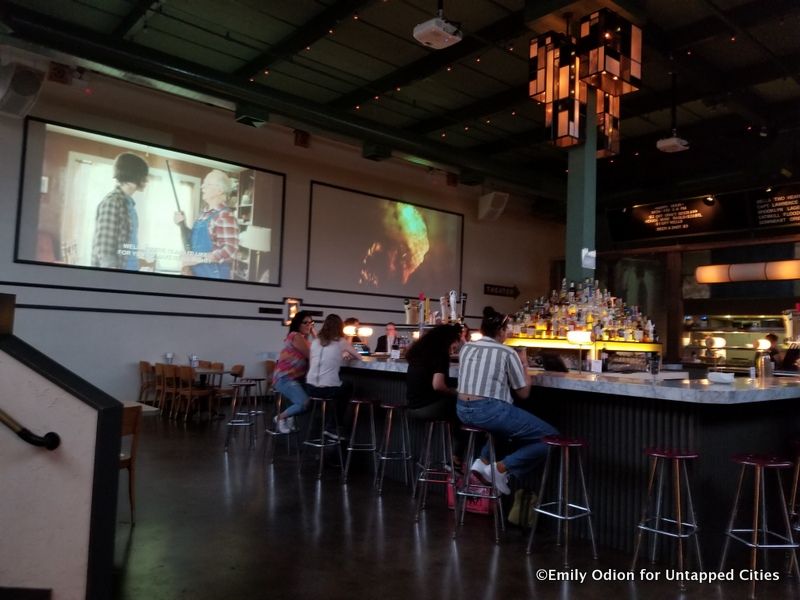
Syndicated, a warehouse turned bar, restaurant and movie theater is located on Bogart Street a few blocks down from the Morgan Avenue L train stop. The outside is mostly unadorned, but once inside the space has a lot to offer. Created from the desire to bring drinking and dining out together with the theater experience, Syndicated has a grand bar area where you can watch two projectors showing sporting events, and a back theater room with tables where they screen a variety of niche films and TV shows. A recent week was dedicated to a Harry Potter marathon week, which includes a trivia night as well as themed drinks.
The kitchen has a selection of bar food, beer and wine, and specialty cocktails. They even have opportunities for filmmakers to submit their work, or host viewing parties in their space. There is a schedule of films screenings with more ticketing information on their website.
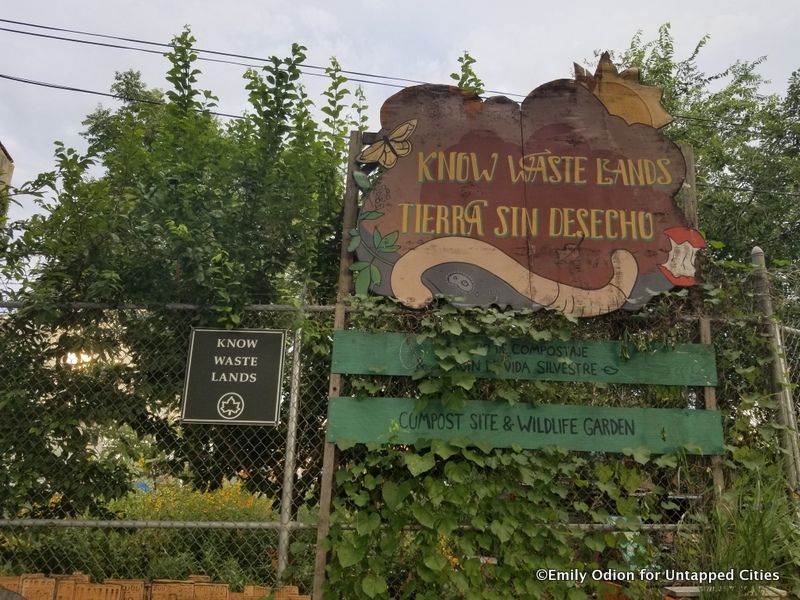
The space along Myrtle Avenue between Dekalb and Cedar was just an empty lot until 2013, until the composting group BK Rot got ahold of it. The area is now a community garden space and composting site called Know Waste Lands, which is deceptively spacious and filled with flowers, vegetables, and fruit trees. The idea behind it is to bring together eco-friendly neighbors to get rid of their compost and enjoy the same natural space. There is even the opportunity for some neighborhood kids to earn extra money by picking up neighbors’ compost bags and bringing them to the garden. Its definitely worth stopping by if you’re in the area.
Know Waste Lands is located at 1309 Dekalb Avenue.
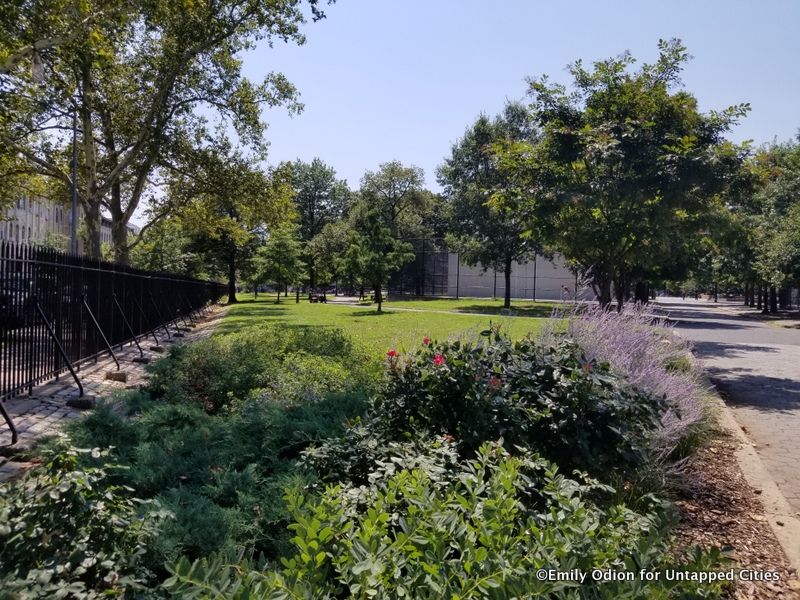
One of the things that defines the atmosphere of a neighborhood is the number and quality of the parks there. In the case of Bushwick, it is honored to be home to the great Maria Hernandez Park. The park is named after the community leader who worked to rid the block by the park of drug dealers, and was consequently shot in her home. Despite this somewhat gruesome backstory, the park today is a must-visit part of the neighborhood.
There are a couple other parks in Bushwick, however Maria Hernandez truly seems to capture the essence of the neighborhood. All sorts of people can be seen in the park during the summer. Large trees cover the western edge of the park in refreshing shade, and there are usually some flowers out. It is lined with interesting bars, bodegas, and restaurants, while the park itself features a playground, sporting areas, and a dog park for both big and small dogs.
Maria Hernandez Park is bounded by Knickerbocker Avenue, Irving Avenue, Starr Street and Suydam Street.
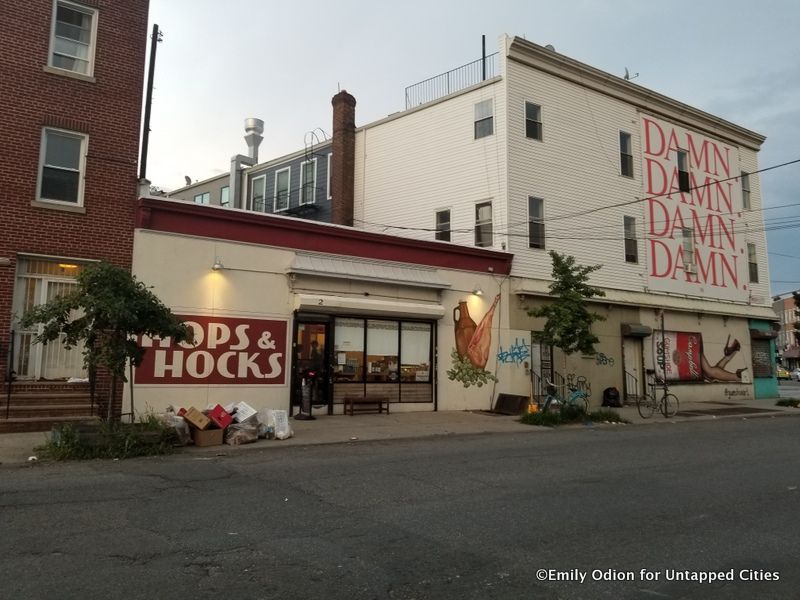
Although the heyday of brewing in Bushwick is long over, there is no shortage of great beer to try in the neighborhood, thanks to the influx of craft-beer enthusiasts. Hops and Hocks, a little store right on Morgan Avenue, is a great place to check out for all your beer, cider, and kombucha on tap needs. The store, while specializing in beer, has a selection of other things to go along with it including snacks, cheeses, other beverages, and sandwiches made on site.
Although the store has a familiar bodega-like quality of on-the-go shopping, inside the store there is room to sit and sample the drinks. The business does its part to be community oriented, with weekly beer and sparkling wine tastings (the schedule is online) and by bringing in new beers to the taps regularly. The staff is very knowledgable and friendly, and always willing to offer samples and advice.
Hops and Hocks is located at 2 Morgan Avenue.
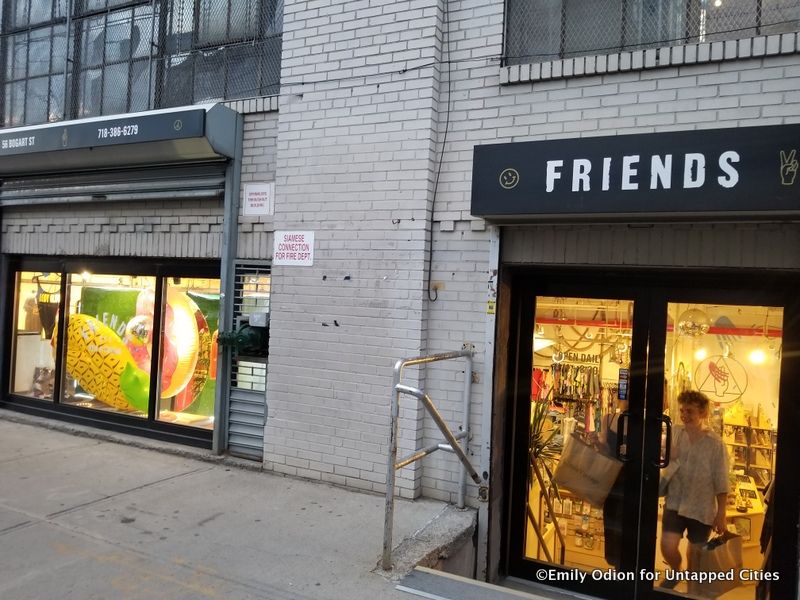
Another spot just off the Morgan Avenue L train, Friends NYC is a below ground fashion haven shouldn’t be missed by anyone interested in finding some unique clothes or apartment supplies. Even for those not interested in fashion, there is a lot to see. Conceived in 2012, the store is self-proclaimed to be “2200-square-feet of indie department store retail goodness,” offering vintage and new clothing. The store tires to empower local artists and fashionistas, as well as bringing in styles from all over, including designers like Lazy Oaf, Working Girls, and Jeffery Campbell to name a few.
The business is focused on sustainability and empowerment, which fits perfectly into the products they offer, which includes jewelry, home decor, men’s and women’s fashion, as well as some in-house designs. The store is independently run and managed by a group of women. For more insight on their aesthetics, you can check out their Instagram page.
Friends NYC is located at 56 Bogart Avenue.
Bushwick is known for being a great neighborhood for art enthusiasts, and NURTUREart has been a part of that since it moved to the neighborhood in 2006. The space provides opportunities and resources for local artists, curators public school students, thereby enriching the neighborhood to an even greater extent. The center encourages participation in the part of the patrons, as well as inter-generational interest in the work they do.
For the most part, their mission is to support upcoming artists and help those in the arts community meet their potential. It’s definitely worth taking a stroll through the gallery, just across from the Morgan L train stop, and learning more about the non-profit and the arts in Bushwick.
NURTUREArt is located at 56 Bogart Street.
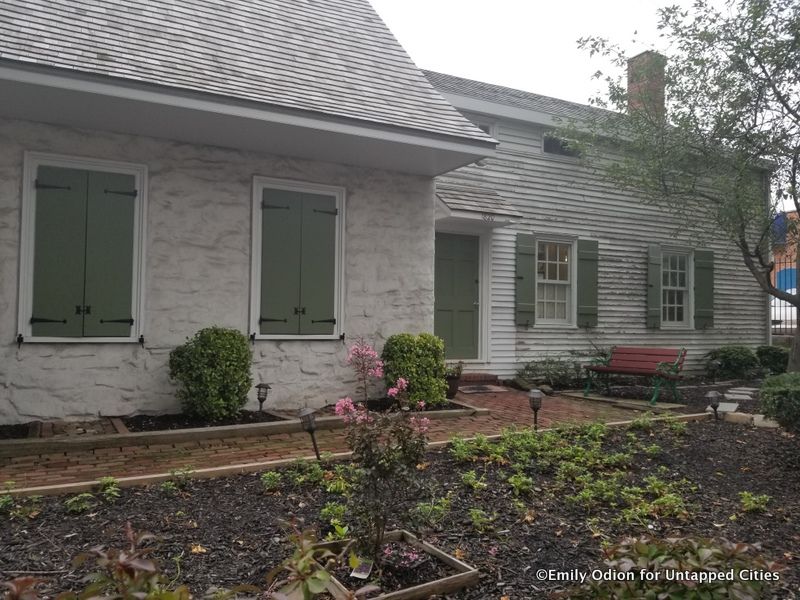
The Vander Ende Onderdonk House, which stands between Bushwick and the neighboring Ridgewood, is the oldest remaining Dutch Colonial house in New York, constructed around 1709 by Paulus Vander Ende, although foundations of the house have been around since 1660. Since 1975, the house has represented the Greater Ridgewood Historical Society, which stepped in to prevent its demolition.
The house serves as a museum of the archeological history of the area and the house in general, giving insight into the lives of Dutch Colonialists, in addition to temporary exhibits and a research library. Other than being an interesting look into the history of the area, the museum makes for an interesting venture from the typical activities of the city.
One of the fun things to check out here is Arbitration Rock, a contentious border marker said to have once demarcated the border of Brooklyn and Queens.

Every June, Bushwick is hosts The Bushwick Collective Block Party where local artists come together on Troutman Street to paint, enjoy live music, and hang out. Although the event itself is only once a year, the murals lining Troutman Street can be seen at any time, and they cover more or less the entire block between Wyckoff and St. Nicholas Avenue, and the non-profit Bushwick Collective is active all year round. The block on Troutman Street also features a number of great bars, cafes and restaurants where you can sit outside and enjoy the artwork.
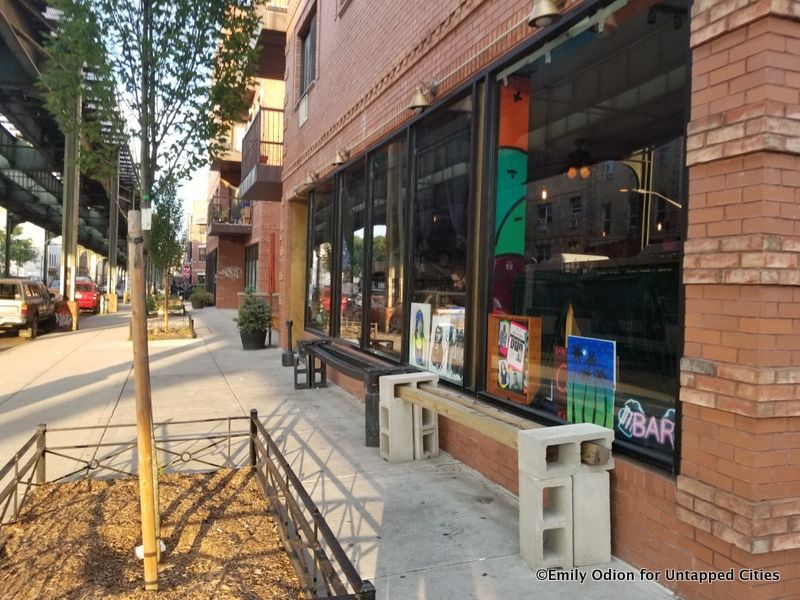
Bushwick is home to a number of great places to relax and spend an afternoon, and Central Avenue in the area around where it crosses Myrtle Avenue is a good place to start. At the intersection is OMG Pizza, notable for the street art all over its building and because it occupies an entire triangular block adjacent to the intersection. Up Myrtle Avenue under the Central Ave Subway stop is Gotham City Lounge, a comic themed bar, and diagonally across Myrtle from OMG Pizza is the bar, Bushwick Public House (more detail on that spot later).
Central Avenue, south of Myrtle, is home to Brooklyn’s first Kava bar, a traditional South Pacific tea drink said to have medicinal properties. Kava has a calming and euphoric effect in addition to its health benefits, which include reduced anxiety and stress. The goal of the House of Kava is to create a nurturing environment for people to unwind, be creative and productive, and learn more about Kava tea.
Across from the Kava bar is the FirstLive Studio and Coffeehouse, which opened recently as an expansion of the Knitting Factory in Williamsburg. The business offers studio recordings, as well as both video and audio production services in the same space as a regular coffeehouse serving Slayer Espresso. There is ample space both inside and outside for seating along Central Avenue, which is an important residential and more quiet part of the neighborhood.
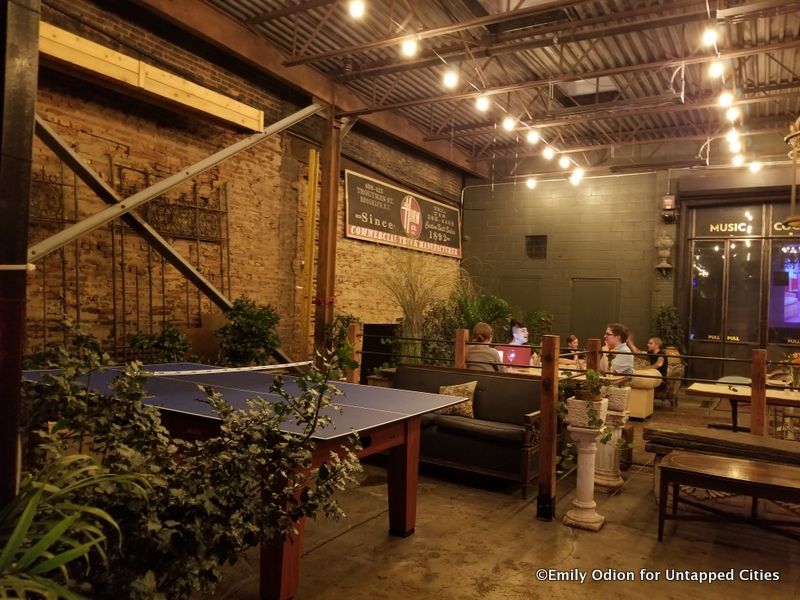
In what was once a warehouse in the renovated industrial part of Bushwick to the east of Maria Hernandez park is the impressive Lot 45, an entertainment space and bar along the trendy Troutman Street of the Jefferson L train stop. The space is divided in two, partially indoors and partially outdoors, with a bar in each section. There is a nightclub area in the back with a stage and dance floor and big screen. The back area hosts ticketed events on a regular basis, but even on nights without a show the space is open as a cocktail bar and restaurant.
One of the major perks of Lot 45 is the amount of space and variety in entertainment that it offers. While the front operates with a restaurant ambiance, including a number of dining tables, ping pong, fussball, and other games. The decoration is very natural, with plants hanging around the walls.
Lot 45 is located at 411 Troutman Street.
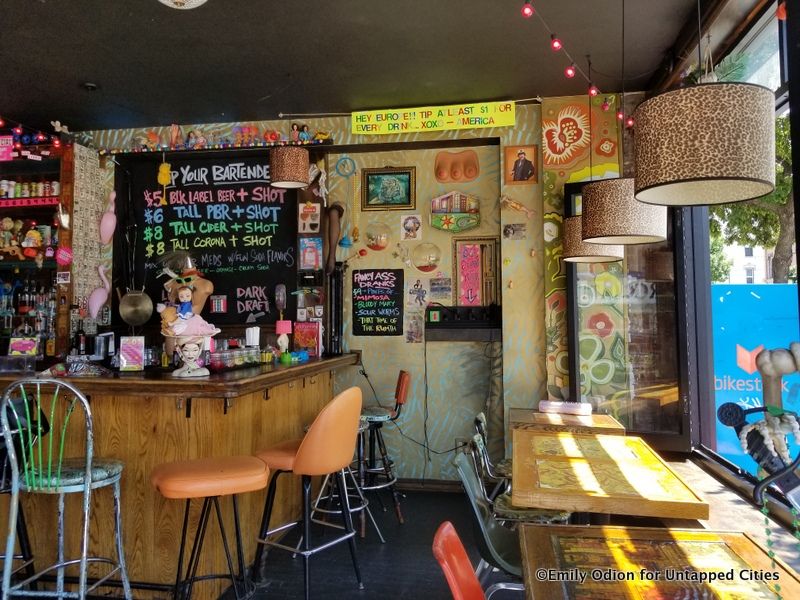
There are a lot of unique places in Bushwick, but perhaps the place to top all of them is Boobie Trap, a bar with the theme in the name. The area behind the bar is decorated with a variety of mannequin busts and other wacky decor, but perhaps the most notable decoration is the collection of plastic lawn flamingos outside and the kitschy neon and magazine cover style inside. Despite the loud personality the bar exudes, it is a great place for a quick cheap drink or bar food, and the tables double as board games.
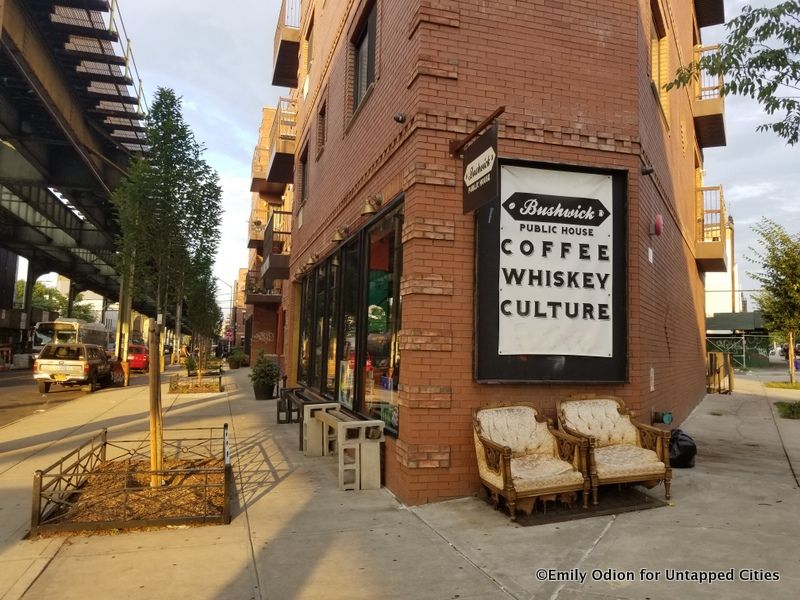
Although a lot of spots on this list have gone to bars and other late night digs, a special place on here belongs to the Bushwick Public House, a cafe and pub below the raised M line between Stockholm and Central Avenue. Their motto, “Coffee, Whisky, Culture,” succinctly encapsulates what the vibe of the place is like. Its a small and personal space, with a pool table and weekly free screenings of Game of Thrones. The bartenders are very friendly and will take music suggestions. It’s definitely a hotspot for locals and anyone who wants a more public environment to get some work done. The bar and outdoor bench are usually filled with people on their laptops or notebooks, or else socializing quietly. It’s a good place to go for a more traditional bar experience, or for some quality whisky.
Bushwick Public House is located at 1288 Myrtle Avenue.
Next, check out 21 Must Visit Spots in Greenpoint and our full archive of neighborhood must-visit guides.
Subscribe to our newsletter